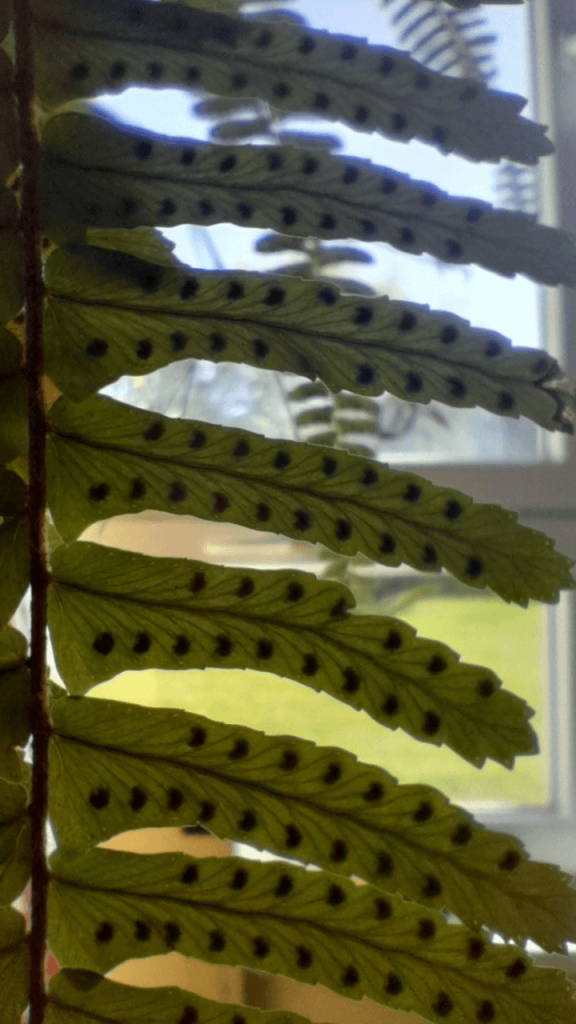I understand the impact of air quality on human health and the environment, emphasizing that poor air quality can lead to respiratory issues and allergies. Surprisingly, indoor air can sometimes be more polluted than outdoor air due to construction materials, cleaning products, and poor ventilation. This is where the role of Boston Ferns (Nephrolepis exaltata) becomes crucial.
Indoor spaces like homes and offices can accumulate pollutants that decrease air quality. Air-purifying paints and adhesives release volatile organic compounds (VOCs), while cleaning products add chemical pollutants to the air, worsening respiratory conditions and allergies. Known scientifically as Nephrolepis exaltata, are renowned for their ability to purify indoor air by absorbing these harmful VOCs, making them an essential addition to any indoor environment.
Moreover, inadequate ventilation exacerbates the issue by limiting the exchange of indoor and outdoor air. This prevents pollutants from dispersing naturally, causing them to build up inside, which can significantly harm indoor air quality. The introduction of Nephrolepis exaltata into these spaces can play a vital role in improving air quality. Their natural air-purifying properties help reduce the concentration of pollutants, thus contributing to a healthier indoor atmosphere.
Boston Ferns as an air-cleaning plant
I find the findings of the NASA study on the air-cleaning capabilities of Boston Ferns truly fascinating. The study highlights the remarkable efficiency of these plants in purifying the air we breathe, making them an exceptional choice for indoor environments.
Boston Ferns, with their lush and leafy foliage, possess a unique ability to remove harmful airborne pollutants from the surroundings. Through a process known as phytoremediation, these ferns actively absorb pollutants such as formaldehyde, benzene, and xylene from the air and convert them into harmless compounds. The effectiveness of Boston Ferns in improving air quality has been scientifically proven, making them a top contender when it comes to choosing air-cleaning plants.
Aside from their remarkable air-purifying properties, Boston Ferns have earned their popularity as indoor plants due to their visually appealing aesthetics and ease of care. The delicate, feathery fronds of the fern create an enchanting display, adding a touch of natural elegance to any indoor space. Their vibrant green foliage brings life and vibrancy to various settings, making them a favored choice for home and office decor.
The Benefits of Boston Ferns

I find the unique characteristics of Boston Ferns truly remarkable. These ferns possess an incredible ability to actively purify the air by absorbing pollutants through tiny pores on the surface of their leaves.
Through a natural process known as foliar absorption, Boston Ferns effectively capture airborne pollutants such as formaldehyde, benzene, and xylene. These harmful substances are then broken down within the plant, transforming them into harmless byproducts. What is truly fascinating is that the ferns utilize these byproducts as nutrients, further contributing to their own growth and vitality.
The intricate network of pores on the leaves of Boston Ferns plays a vital role in their air-purifying capabilities. These microscopic structures, known as stomata, enable the exchange of gases with the environment. As the ferns absorb pollutants, the stomata facilitate the passage of gases into the plant, where the pollutants are subsequently metabolized and neutralized.
This exceptional ability of this plant to transform pollutants into beneficial nutrients highlights its role as nature’s own air purifier. By incorporating these ferns into indoor spaces, we can actively improve the air quality and create a healthier environment for ourselves.
From an arborist’s perspective, I highly recommend Boston Ferns for their remarkable air-purifying properties. These ferns not only enhance the aesthetic appeal of any setting with their graceful fronds but also contribute to the overall well-being of the space by actively removing pollutants from the air. By choosing Boston Ferns, we can embrace a natural solution to combat indoor air pollution, fostering a healthier and more sustainable environment.
Comparison of Boston Ferns to other air-cleaning plants
I can confirm that Boston Ferns have been extensively studied by NASA and have proven to be one of the most effective plants in purifying the air. Their exceptional air-cleaning abilities make them a valuable addition to any indoor space.
One notable pollutant that Boston Ferns excels at removing from the air is formaldehyde. Formaldehyde is a common indoor pollutant emitted by various building materials, furniture, and household products. The fern’s lush foliage and intricate leaf structure allow it to efficiently absorb formaldehyde molecules, helping to improve the overall air quality in the environment.
While Boston Ferns take the lead in air purification, it is worth mentioning that other plants also possess notable air-cleaning properties. Snake plants, spider plants, and peace lilies are among the plants that have been recognized for their ability to remove pollutants from the air. These plants actively absorb harmful substances through their leaves, roots, and even the soil, contributing to a cleaner and healthier indoor atmosphere.
Incorporating these air-cleaning plants into our indoor spaces not only enhances the aesthetic appeal but also promotes a healthier environment. We encourage the inclusion of Boston Ferns, snake plants, spider plants, and peace lilies in homes, offices, and various indoor settings as a natural and effective solution to combat indoor air pollution. By embracing the power of these plants, we can create spaces that are both visually pleasing and environmentally beneficial.
Maintenance of Boston Ferns

Boston Ferns thrive in bright, indirect light, making them an ideal choice for areas with ample natural light. However, they are adaptable and can tolerate some shade, allowing for placement in spaces with lower light conditions. We recommend finding a balance that provides sufficient light without subjecting the ferns to direct sunlight, which can lead to leaf scorching.
Maintaining high humidity is crucial for the health of Boston Ferns. They naturally thrive in humid environments, so it’s essential to replicate these conditions in indoor settings. Misting the foliage regularly or placing a tray of water near the plant can help create the desired level of humidity. This ensures that the ferns’ delicate fronds remain lush and vibrant, preventing them from drying out.
In terms of soil preferences, Boston Ferns favor well-draining soil that retains moisture without becoming waterlogged. It’s important to strike a balance to prevent root rot and other moisture-related issues. Regular watering is necessary to keep the soil consistently moist, but it’s crucial to avoid overwatering which can lead to waterlogged roots. We recommend allowing the top inch of soil to dry out slightly between waterings while ensuring the overall soil moisture is maintained.
By providing appropriate light, humidity, and well-draining soil, we can ensure that Boston Ferns thrive and continue to provide their air-purifying benefits. We emphasize the significance of understanding and meeting the specific care requirements of Boston Ferns to ensure their longevity and vitality as stunning additions to indoor spaces.
Common problems and how to avoid them
Overwatering is a common concern when caring for Boston Ferns. We understand the importance of maintaining proper soil moisture levels to prevent root rot. Allowing the soil to dry out slightly between waterings is crucial in ensuring the health of the ferns. This allows the roots to receive the necessary oxygen and prevents waterlogged conditions that can lead to root damage. By carefully monitoring the soil moisture and adjusting watering frequency accordingly, we can avoid the pitfalls of overwatering and promote optimal growth.
Maintaining adequate humidity is essential for Boston Ferns, as they thrive in high-humidity environments. Insufficient humidity can cause the tips of the leaves to dry out and turn brown. To prevent this, misting the leaves regularly or using a humidifier in the vicinity of the ferns can help create a more humid microclimate. This practice mimics their natural habitat and ensures the ferns’ foliage remains lush and vibrant, minimizing the risk of drying out.
Like many indoor plants, Boston Ferns are prone to certain pests, particularly spider mites and mealybugs. We emphasize the importance of inspecting the ferns regularly for signs of infestation. Early detection allows for prompt intervention and prevents the pests from causing significant damage. If an infestation is detected, appropriate measures such as using insecticidal soap or wiping the leaves with a damp cloth can help mitigate the issue and preserve the ferns’ overall health.
By being mindful of the watering schedule, maintaining adequate humidity, and promptly addressing pest infestations, we can ensure the longevity and vitality of Boston Ferns. We value the health and well-being of these plants, and through our careful attention and proactive care, we can enjoy their beauty and air-purifying benefits for years to come.
Tips for maintaining healthy Boston Ferns

Understanding the need to properly nourish Boston Ferns for their growth and vitality is essential. Fertilizing Boston Ferns every few weeks during their growing season is crucial for promoting healthy growth. Use a balanced, water-soluble fertilizer made for indoor plants to provide them with necessary nutrients. It’s important to follow the recommended dosage and application instructions to avoid over-fertilizing and damaging the ferns.
To maintain the visual appeal and overall health of Boston Ferns, it’s necessary to regularly remove brown or yellow leaves. These leaves can indicate age, natural shedding, or disease. Pruning these discolored leaves will keep the plant looking vibrant and help prevent any potential disease or pest spread. Prompt removal of declining signs ensures the plant’s energy focuses on growing healthy foliage.
Boston Ferns may eventually outgrow their containers, leading to overcrowded roots and potentially affecting their health. Repotting Boston Ferns every 1-2 years offers them enough space for root development and promotes healthy growth. Choose a slightly larger pot with good drainage holes and use a well-draining potting mix suitable for ferns to ensure an optimal growing environment. When repotting, gently untangle roots and remove any damaged or dead parts.
By adhering to these care guidelines, including regular fertilization, proper pruning, and timely reporting, we can secure the long-term health and beauty of Boston Ferns. Our commitment to these plants’ well-being, combined with our expertise and care, supports their thriving in indoor environments.
Conclusion
We value the role that Boston Ferns play in enhancing both the air quality and aesthetics of indoor spaces. Extensive research conducted by NASA and other institutions has confirmed that Boston Ferns are among the most effective air-cleaning plants available.
These remarkable ferns excel at removing formaldehyde from the air, a prevalent indoor pollutant commonly found in building materials and household products. With their natural ability to absorb and break down formaldehyde molecules, Boston Ferns contribute to creating a healthier and more breathable indoor environment.
Beyond their air-purifying properties, Boston Ferns also bring a touch of elegance and natural beauty to any indoor setting. Their delicate fronds and lush foliage add a refreshing and vibrant element to the decor, creating a visually pleasing atmosphere that promotes a sense of tranquility and well-being.
In addition to their attractiveness, Boston Ferns are highly regarded for their ease of care. These resilient plants can adapt to various indoor conditions, making them an ideal choice for both seasoned plant enthusiasts and beginners alike. With the right balance of light, moisture, and well-draining soil, Boston Ferns can thrive and flourish, requiring minimal effort on the part of the caretaker.

